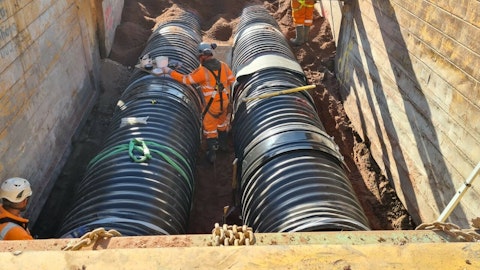As part of the project to increase traffic capacity by building a new link road from the M55 to Preston and southern Fylde commissioned by Lancashire County Council, and led by main contractor Costain, SGC Civil Engineering were appointed to deliver a comprehensive drainage package.
This consisted of the installation of large precast concrete culverts and headwalls , pre and post earthworks drainage up to 5-6m deep with pipe diameters up to 1200mm, a package pump station and localised ditch regrading at outfalls. A lot of the culvert installations and outfalls were on live waterways or extensions of existing culverts so in some cases substantial over pumping systems had to be setup.
Because these were established live waterways, extra consideration was given to the potential environmental impact on the flora and fauna in the area. Measures were implemented such as silt management to avoid silt and mud building up downstream and ecologist surveys to check for water voles in ditches, protected plants and nesting birds in hedges.
We were unfortunate to be hit by an unprecedented number of 1 in 10 weather events, which had a major impact on the earthworks operations, which in turn impacted the schedule for the drainage operations. However, with extensive collaboration with all parties, we worked hard to stay on schedule.
The schedule then took another hit when the country went back into a national Covid-19 lockdown. We were able to proceed with works, but with an overhaul of our Risk Assessments and Method Statements (RAMS) to comply with government guidelines. Whilst some operations were limited by, for example, the need to socially distance when travelling in vans or working in trenches, others were subject to new innovations that improved our way of working. In one instance, rather than using two people on a culvert puller, we used a machine to push home instead which proved to be quicker and cheaper.
Given the challenges we faced on this project, we were proud of the way our team took problems in their stride, adapted, overcame and ultimately completed the project safely, on time and under budget.


























